Few summer pleasures beat grilling up a storm outdoors with friends. But hauling all the food and equipment to and from the house can quickly turn a cookout into a stressful affair.
Outdoor Kitchen Contractor Near Me puts everything you need to whip up dinner at your fingertips so you can focus on the fun. Here are some key considerations when designing your own.
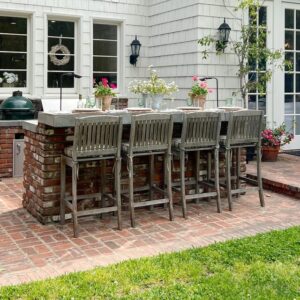
When designing a new outdoor kitchen, the layout is one of the most important aspects. It determines the way you use your space and how easy it is to move around and cook. It also determines the aesthetic of the space, and if you want to match it to the architecture or style of your home.
Professional kitchen designer Dawn Whyte breaks down a typical outdoor space into four activity zones that help homeowners choose the best configuration for their needs. She recommends locating your prep zone adjacent to your cooking zone to create a work triangle that increases efficiency. For entertaining, she suggests a dining zone nearby where guests can easily serve themselves from the food you’ve prepared. Finally, a cleaning and disposal zone is an essential addition, as it saves you from running back and forth inside to clean dishes or fill containers with water.
The straight run or single wall kitchen is a popular option that works well for many spaces. It can include all the storage and workspaces of other configurations but is less visually prominent. It is often built beneath a pergola to add extra shade and visual appeal to the area.
Another layout option is the L shaped kitchen. This option provides workspaces on two walls and can include all the major appliances like a grill, refrigerator, sink and more. It also allows for a bar area on the return, which can be a great spot to socialize while you prepare meals for friends and family.
Choosing the right materials is another consideration when selecting an outdoor kitchen layout. Depending on your location, you may need to consider weather extremes that can damage certain materials, such as natural stone or wood. For example, if your home is in a region that experiences hot summers and cold winters, it’s important to use weather-resistant materials. A solid surface such as granite or poured concrete is best, and you should consider adding an awning, pergola, or even a roof to protect against the elements.
When it comes to creating your dream outdoor kitchen, the options are endless. Layout & aesthetics, prebuilt options, and accessory needs and preferences are all important factors in designing an outdoor cooking area that will serve your family well. But it’s also important to outfit your space with the right appliances for your unique cooking and entertaining needs.
From a simple grill to a fully-featured pizza oven, there’s plenty of ways you can take your backyard cooking to the next level. Whether you’re hosting a large gathering or just enjoying a quiet dinner with your loved ones, there’s a perfect appliance to help make the experience more enjoyable for everyone.
Some of the most popular appliances for outdoor kitchens include:
Access doors – Adding an access door to your grill island helps prevent debris, insects, and critters from getting into your equipment and damaging it. Not to mention, this feature gives you an easy way to clean your grill and other equipment.
Drawers – A stainless-steel outdoor kitchen drawer is the ideal place to store your tools, utensils, and cleaning supplies. It’s also a great spot to stash extra fuel or marinades for your grill. Plus, it looks fantastic in any outdoor kitchen design!
Countertops – Stainless steel countertops are an essential component to any outdoor kitchen. They’re designed to withstand the elements and keep their appearance indefinitely. Plus, they’re available in a variety of colors and styles to complement any backyard style.
Lighting – An ambient lighting fixture is a must for any backyard dining area. It creates a warm, inviting atmosphere and enhances your dining experience. Plus, it’s a great way to set the mood for your dinner parties and other social gatherings.
To really make your outdoor kitchen feel like a true extension of your home, add a lounge area where guests can relax and enjoy the scenery. You can even opt for a fire pit or fireplace to bring additional warmth to the space. Whatever you choose, make sure your seating is comfortable and stylish to encourage social interaction between family members, friends, and neighbors.
A well-lit outdoor kitchen is the key to a versatile, functional, and enjoyable space. The right lighting can help transition the area from day to night and set the mood for social gatherings. While there are many lighting options available, a few important considerations must be made. For example, the type of fixture must be rated for outdoor use and should complement the style of your home. Additionally, it is critical to ensure that your lighting design includes enough circuits to accommodate the various appliances, sound speakers, and other accessories.
Pendant lights are a popular option because they provide both functionality and aesthetic appeal. They come in a wide variety of sizes and styles, and can be used alone or paired with other fixtures to create a cohesive look. They are also a great way to illuminate countertops, making them safe and easy to work with after dark.
Wall sconces are another way to add light to your outdoor kitchen. They are easy to install and can be used to create a more intimate atmosphere for entertaining. Additionally, they are a great way to highlight an architectural element or to draw attention to an impressive feature of your yard. For example, a wrought iron fence or an elegant fountain would be showcased nicely by a well-placed wall sconce.
If you have stairs leading up to your outdoor kitchen, consider adding stair lights. These handy fixtures fit right into the steps and brighten up the space, reducing trip hazards and making it safer to navigate your patio or deck after dark.
A good rule of thumb is to include a minimum of three sources of lighting in your outdoor kitchen. This will give you the flexibility to light the cooking area, illuminate seating areas, and set the mood for social gatherings. Adding extra task lighting in the form of recessed lighting, under-cabinet lights, or built-in sconces is also a great idea.
The last piece of advice is to work with a professional to get the best results when designing your outdoor kitchen. A pro will be able to incorporate your vision into a practical, aesthetically pleasing design that will make your outdoor kitchen a truly functional addition to your home.
An outdoor kitchen can give you a reason to dine at home more often. Eating out can be expensive, and even a small dinner for the family can add up fast. By taking your meals outside you’ll save money and enjoy a atmosphere that’s hard to match at many restaurants.
Whether you’re hosting friends or cooking for the family, an outdoor kitchen will keep everyone in one place instead of scurrying in and out to indoors when food is sizzling and drinks are flowing. It also means fewer dirty dishes to wash and less time dealing with lingering cooking smells in the house.
Cooking outdoors can keep the home cool as well, which may help reduce energy bills. Indoor kitchens can quickly heat up, which requires the air conditioner to work harder to offset the extra heat. By cooking outside and giving the house’s cooling system a break, you can save money on your energy bills.
An added benefit is that by moving all of the cooking to the outside, it keeps smoky and greasy odors out of your home. This is especially helpful if you have young children or pets who might otherwise inhale those odors. Cooking outdoors can also eliminate some of the not so pleasant odors that come with certain foods, such as seafood or fish.
A pergola can make a great backdrop for an outdoor kitchen and provide a spot to sit in the shade when the weather is hot. The structure is a beautiful setting for flowering vines and can be designed to include a retractable shade fabric for additional shady comfort.
The right landscaping can make an outdoor kitchen look more appealing year-round and can increase the value of your home if you ever decide to sell. A well-designed landscape that flows with the cooking area, dining areas, and living space will impress guests and potential buyers. Annual lawn care services, such as over-seeding in fall or spring and regular weed control treatments, can create an attractive lawn that discourages weeds and pests and encourages a healthier lawn for the whole family to enjoy.

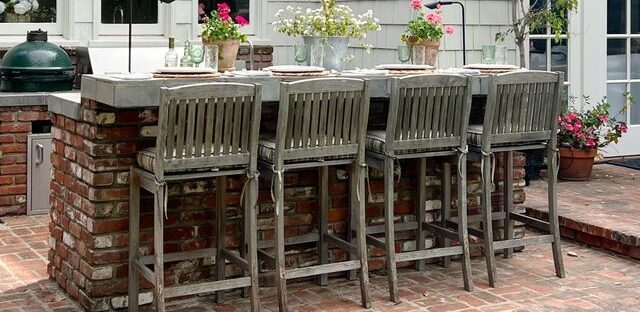
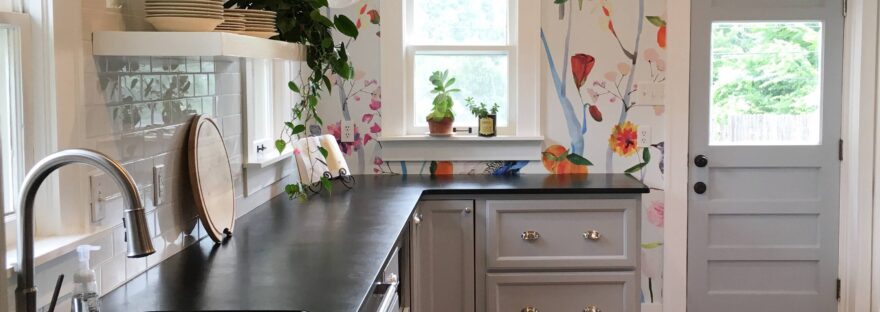
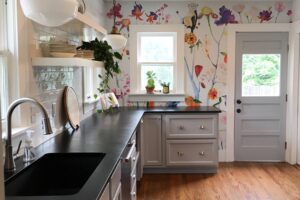
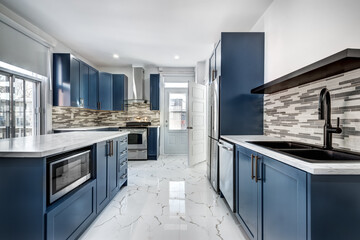
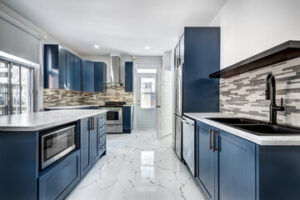 The design phase of a kitchen remodel starts long before the remodeling work begins. A professional designer can help you make the best choices for your space and help you set a realistic budget.
The design phase of a kitchen remodel starts long before the remodeling work begins. A professional designer can help you make the best choices for your space and help you set a realistic budget.